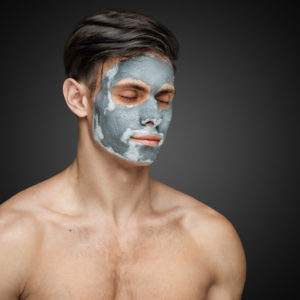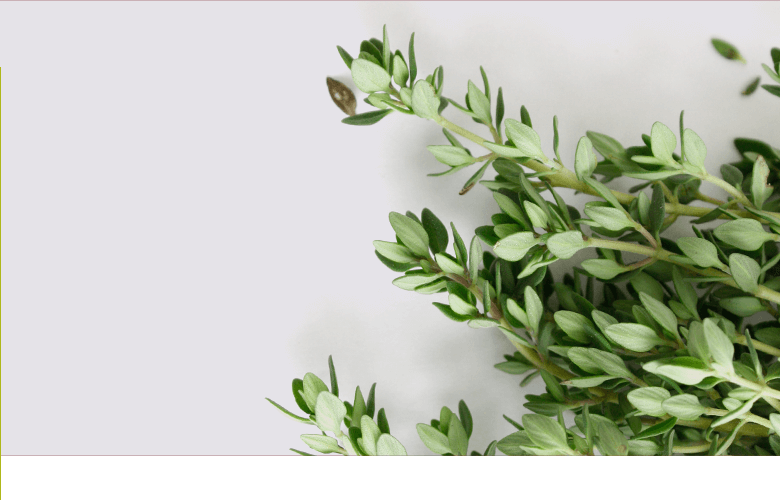VALUABLE SUPPLEMENTATION Vitamin C DOSSIER MAGAZYN LNE

The vitamin C does not only support us in fight against cold. It also makes us younger, we have better skin, stronger bones and more energy. How much of it do we need and in what form we should take it – explains Doctor Grażyna Pająk.
LNE: Does the quantity of the consumed vitamin C influence our look ?
G.P. : The vitamin C works in favor of our beauty because it neutralizes the impact of the free radicals. It is also a very active antioxidant working in the blood plasma.
It works with other compounds catching the free radicals, which means the slower destruction of cells and a younger organism. At the same time it reduces the oxidized vitamin E activating it anew. Thanks to that it enhances the stability of the cell membranes in the whole organism, also in the skin. The vitamin C also enables the synthesis of the collagen and the basic proteins. Thanks to that the connective tissue that builds the skin, bones and cartilage becomes stronger and more resistant. Also the influence of this vitamin on the immune system is well-known. It is worth mentioning that is promotes the wound healing, increases the iron absorption and enables the transport of the fatty acids to the mitochondria. All of this has influence on the beautiful and youthful appearance. Additionally, the beneficial influence of the vitamin C on the nervous system makes us smile.
LNE: How can we tell we have the deficiency of vitamin C ?
G.P. : There are many signs that can alarm us: fatigue, grey skin, aggravation of allergy, decrease of immunity – for example when we cannot cure cold for a long time.
LNE: How much of it do we need ?
G.P. : A while ago we talked about as many milligrams as we weigh. 60-75mg of the natural vitamin C is really enough when we are healthy, we fell well and live a balanced life. However currently people say that we need around 200mg. There are several reasons: less vitamins in the natural food products, more polluted environment, common stress. However when we suffer serious health conditions, in the hospitals or private clinics doctors use much higher doses, sometimes even up to 20g of vitamin C per day.
We should also note that under long-time stress our demand for vitamin C is higher. The same is when we smoke because the substances included in the smoke eliminate this vitamin from our body. Also the environment matters. The lesser the electromagnetic smog around us is and the more we work with computers, the more vitamin C we need and we must pay attention to supplement it.
The same is with illnesses, infections, taking medicines, drinking alcohol, high level of physical activity – especially when it is cold. The demand for vitamin C is higher in autumn, when the temperature is lower.
Sometimes we need only 60 mg of vitamin from acerola to give body a right dose – in the case of the ascorbic acid it must be much more.
LNE: In what form should we take this vitamin ?
G.P. : As opposed to other organisms, a man, the rest of the primate mammals and the guinea pigs do not produce the vitamin C. That is why we need to take it in proper amounts along with the food. It is worth taking this vitamin in the natural form. It is the so-called levorotatory vitamin, connected to the biologically active substances contained in plants and concentrated plant extracts.
I recommend being careful when it comes to the vitamin C in the form of popular pills or effervescent tablets. They are the pure ascorbic acid which may irritate the cell membranes, increase the quantity of stones in the gall bladder, kidneys and bladder, disrupt the insulin production by bodies of people suffering from diabetes. Sometimes it causes the stomach or duodenum irritation. In bigger doses – as results from the current studies – it may inhibit the transport of electromagnetic impulses in muscles. It is a dextrorotary chemical compound that acidifies the organism. For the body it is a foreign substance which is hardly recognized by our DNA, so it is hardly absorbed. From the chemical point of view, the natural and synthetic vitamin C is the same compound, but biochemically those substances work differently.
LNE: What products should we take into consideration ?
G.P. : Fruit of course, such as the wild rose, currant, gooseberry, chokeberry, grapefruit, lemon, strawberries and vegetables such as cabbage and cauliflower, onion, garlic, leek, chive, tomato and pepper. The bigger amount of vitamin C is in the fresh and natural food. Its content is influenced not only by processing the crop but also the length of storage, conditions of transport and chemical substances used in production and preservation.
It is worth taking vitamin C in the natural form, the so-called levorotatory vitamin, which is contained in plants and concentrated plant extracts.
LNE: Does it mean that it is enough to eat properly or we should take supplements containing vitamin C ?
G.P. : With our current lifestyle and the state of environment the fruit and vegetables are not enough. However instead iof the pills with ascorbic acid I propose the natural juice and fruit extracts. They may be weak substances containing 60-150mg of this vitamin and they should be taken quite often. For example acerola products. This variant of cherry contains incredibly big amount of vitamin C along with the bioflavonoid. Sometimes we need only 60mg of vitamin with acerola to give our body a proper amount – in the case of the ascorbic acid it must be much more. If we decide to take synthetic ascorbic acid, it must be always accompanied by the bioflavonoid, so the biologically active compounds thanks to which the vitamin is friendly for the organism.
LNE: How often should we take those products ?
G.P. : Like every antioxidants, the vitamin C is best to be taken 2-3 times a day in small amounts and not once a day in a bigger amount. The antioxidants protect the cell membranes, however the organism cannot use them all at once. Their surplus is discharged and after about 6 hours the stress appears on the cell membranes. It is important to take vitamin C regularly – only then we can improve the immunity and balance the metabolic processes.
The deficiency cannot be complemented with one dose, however we can feel a bit better.
Dr Grażyna Pająk Biologist, diet coach, media expert, lecturer.
Interview for LNE – conducted Olga Filanowska
DrGRACE TEAM September 4th, 2015
Tags: active antioxidants, beauty, bones, connective tissue, drGrace, free radicals, increased iron absorption, LNE, more energy, skin, supplements, vitamin C, vitamin E, youth
THE ROLE OF DIET IN ACNE THERAPY

Already Hippocrates has stated that we do not understand what is a disease if we do not know what is nutrition. Those words should be carefully considered if we want to treat seriously the skin diseases, including acne – underlines dr Grażyna Pająk, a dietician and nature therapist.
Our skin is not only a packaging, it is a complicated, massive organ that constitutes about 7% of our body. In order to function it needs 1/3 of circulating blood, it receives oxygen and removes the carbon dioxide. The whole life it protects us from external toxins and bacteria, it removes the toxins gathered inside the body and regulates the body warmth.
The reasons causing skin problems include: eating processed food, meals with low energetic value (e.g. from the microwave), large amounts of sugar and bad fats, environmental pollution, UV radiation, electromagnetic smog, careless use of antibiotics, steroids, hormonal agents, stress, smoking, deficiency of vitamins, enzymes and natural nutrients.
Sweets and hormones
The level of sugar in blood influences the hormone production and the appearance of our skin. The carbohydrates – chocolate, bars, sweets, cookies, ice-cream, sweet desserts, overcooked pasta, white rolls, etc. raise the level of glucose in blood and increase the insulin production. After eating sweets the insulin raises the level of testosterone in the body and accelerates the functioning of the skin glands which enables creation of pimples. That is why people fighting acne should avoid eating sweets.
„Enriching” chemical substances
When it comes to food processing we have reached the level of absurdity. Our cells on the molecular level receive high amounts of chemical compounds instead of proper nutrients. In the 90s we ate about 2,5 kg of different chemical substances yearly. Currently it is about 7-8 kg. Only in the EU we add about 170 000 tons of aromas to the produced food yearly. Despite the fact that in the last twenty years the additives and their negative impact on people were the subject of many articles, the amount of chemical substances “enriching” the food increased almost three times. The problem is also that many institutions that allow this food to be on the market still convince us that the processed food is safe, tasty and healthy.
Attention –TRANS fatty acids
The key role in the integrality and fluency of our cell membranes have the proper fatty acids. What a cell builds in its membrane depends mostly on the individual way of nutrition. The researches show that the daily intake of only 5,6g of trans fatty acids may increase the risk of heart diseases even by 20%. All the sweets, pastry of mass production, mayonnaises, cheese-like products, refined plant oils, butter-like products, margarines, etc. – contain the trans fatty acids.
|
What should we eat to improve our skin ?
|
Which products are harmful for the skin ?
|
Milk and milk products
The quality of milk products is getting worse every year. Butter is no longer a butter, cheese becomes a cheese-like product, yoghurts and milk desserts become a mixture of chemical compounds. Most of them contain: trans fatty acids (universal oils) and oxysterol (powdered milk, dried eggs). Additionally the benzoic acid and its derivates irritate the stomach, increase inflammations of intestines and can cause allergies and rash. Also the sulfites and sulphur dioxides are dangerous because of their constant use. Because of their presence in food we may experience allergies, even at small doses, people suffering from asthma may have respiratory problems, swollen nose mucosa, constant headaches, nausea, stomach problems, rash, face redness. The sulphur compounds harm the villi of the small intestine and destroy the vitamins of B group. Similar colorants – those red ones, are harmful for people suffering from asthma and allergies. They may cause skin changes and other sensitization response.
Excess of medicines
We are the leaders when it comes to the medicines intake. Instead of believing in the natural defensive potential of our bodies, each time, according to the suggestive adverts, we take pills. Now we have more and more of them, what comes along with the liver destruction. As a result we take pills for every basic illness and then medicines for treating side effects of those therapies. The disorders of liver functioning also influence the skin.
Deficiency of water and oxygen
The appearance of our skin depends on the efficient exchange of energy in our body. Even the best food is not enough if our cells do not contain enough water and oxygen. With the lack of those compounds our body cannot efficiently convert all the necessary nutrients. The research show that only 2% of cell water deficiency may cause the loss of 20% of energy.
Electromagnetic smog
For centuries all the cells of our body „talk” to each other using different biochemical reactions and very subtle electromagnetic signals with low frequency. The natural environment and magnetic fields manage the biochemical and physiological processes in the body. However the stress caused by artificial electromagnetic field and foreign chemical compounds with the simultaneous lack of proper nutrients cause total chaos on the molecular level (of cells). That is why currently hundreds of researches show harmful influence of the modern world on the immune, hormonal and nervous systems as well as on the synthesis of enzymes. Those factors intensify the skin problems and inhibit the therapy. So it is worth considering whether we need to spend so much time on the computer or with a cell phone at our ear.
Mycosis so the candidiasis
Damaging the immune system by the uncontrolled candida development opens door to bacterial and viral infections. Each breakage of the immune barrier by the attacking microorganisms may cause a small number of bacteria lead to the more serious infections. The remains of the destroyed cells after a fungus attack are a perfect food for the pathogenic bacteria, especially the staphylococcus and streptococcus. In the case of acne the problems concern mainly the repeated infection of the mucosa and skin with a candida, which as a result leads to the development of diseases. In normal conditions the candida is about 2-7% of the bacterial flora of intestines, in the pathological situation it is 60-70% of the intestinal flora! By taking over a bigger space in the digestive system it damages the mucosa and villi in the small intestine, diminishes the space of absorbing nutrients, increases the permeability of the intestine walls causing the permeation of the allergens. Additionally, the mycelium produces the enzymes decomposing the structures of proteins and the shreds of fungi – attached tightly to the cell membranes of the provider – may travel along the mucosa around the cells of our bodies. A perfect nutrition for the candida is sugar, white flour, highly processed, low-value food, dead food from microwave ovens, all the advertised sweets, fizzy drinks, industrial fruit juices, beer and wine.
Parasites
Using more and more chemical substances (medicines, household chemicals, cosmetics, food, etc.) and the environmental toxins around us disrupt the balance of the organism. In such conditions the parasites have access to settle in our intestines, blood and organs. Routinely we deworm animals, but we forget about ourselves. The parasites and the toxins emitted by them influence the skin lesions.
If the laboratorial studies do not show anything, I recommend the resonant diagnosis and blood tests in a dark or light field of vision – a good specialist can read a lot of information from these. When it comes to treatments I recommend the therapy by the resonance, milimetre wave, Zapper, deworming medicines, wild oregano oil, PauD’arco, etc. All of them should be supported by the cleansing diet, regenerating and tightening the intestines, and then a proper nutrition.
Time for regeneration
The continuous process of renewal lets the body keep the health skin. Each, even the smallest amount of toxins in the body is a stressor. The more toxins in the body, the hardest the information exchange is, the nutrients are harder to transport and the cells are renewed more slowly. If we give ourselves a chance, the whole body can efficiently and quickly regenerate, because each minute of life we lose over 40 000 old cells. Each day we lose about 60 000 000 old cells and the new ones are created. The changes inside the body are so fast that as a result during one day “we change about 2 kg of organic matter”. The most efficient substances supporting the removal of acne disorders include the antioxidants, wild oregano oil (drops and pills), chlorella, dietetic fiber with herbs, water aloes extract, lapachol (PauD’arco), colloidal silver, acai frui (MonaVie), probiotics (lactic acid bacteria, without the powdered milk), silicon preparation, etc. All of them are efficient, but must be selected individually.
Using a conscious program including the regeneration of intestines, cleaning the liver, improving functioning of the kidneys and partial program of fungi removal, we lead the body to the state of balance that is the base of health and we can also achieve the expected, long-term effects of the holistic acne therapy.
Author: Dr Grażyna Pająk
DrGRACE TEAM May 20th, 2013
Posted In: DIET COACH, MEDIA, PRESS
Tags: acne, athlete's foot, candidiasis, chemistry, dairy products, electromagnetic smog, excess of drugs, hormones, LNE milk, oxygen, parasites, regeneration, skin, sweets, trans fatty acids, water deficit































